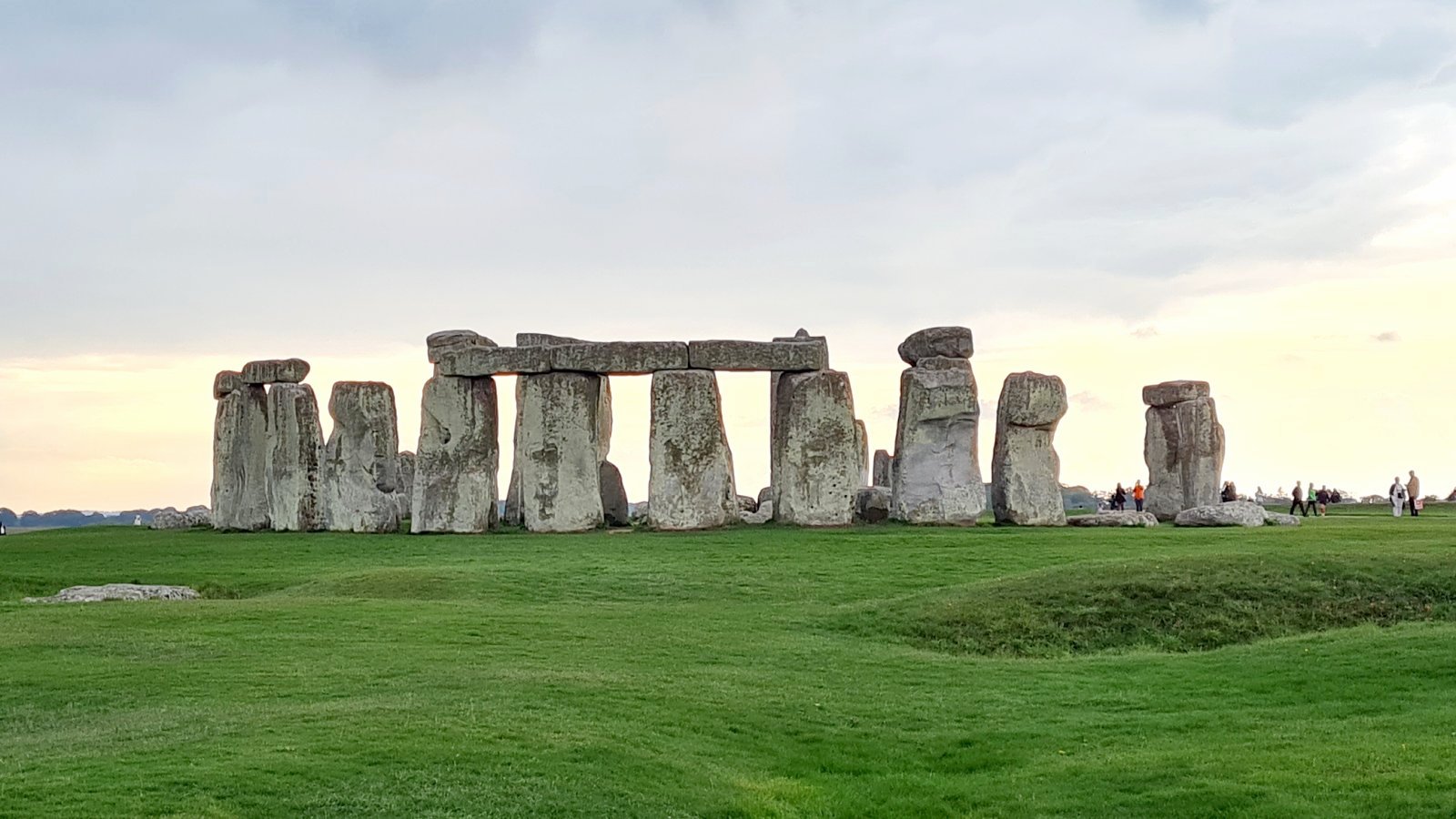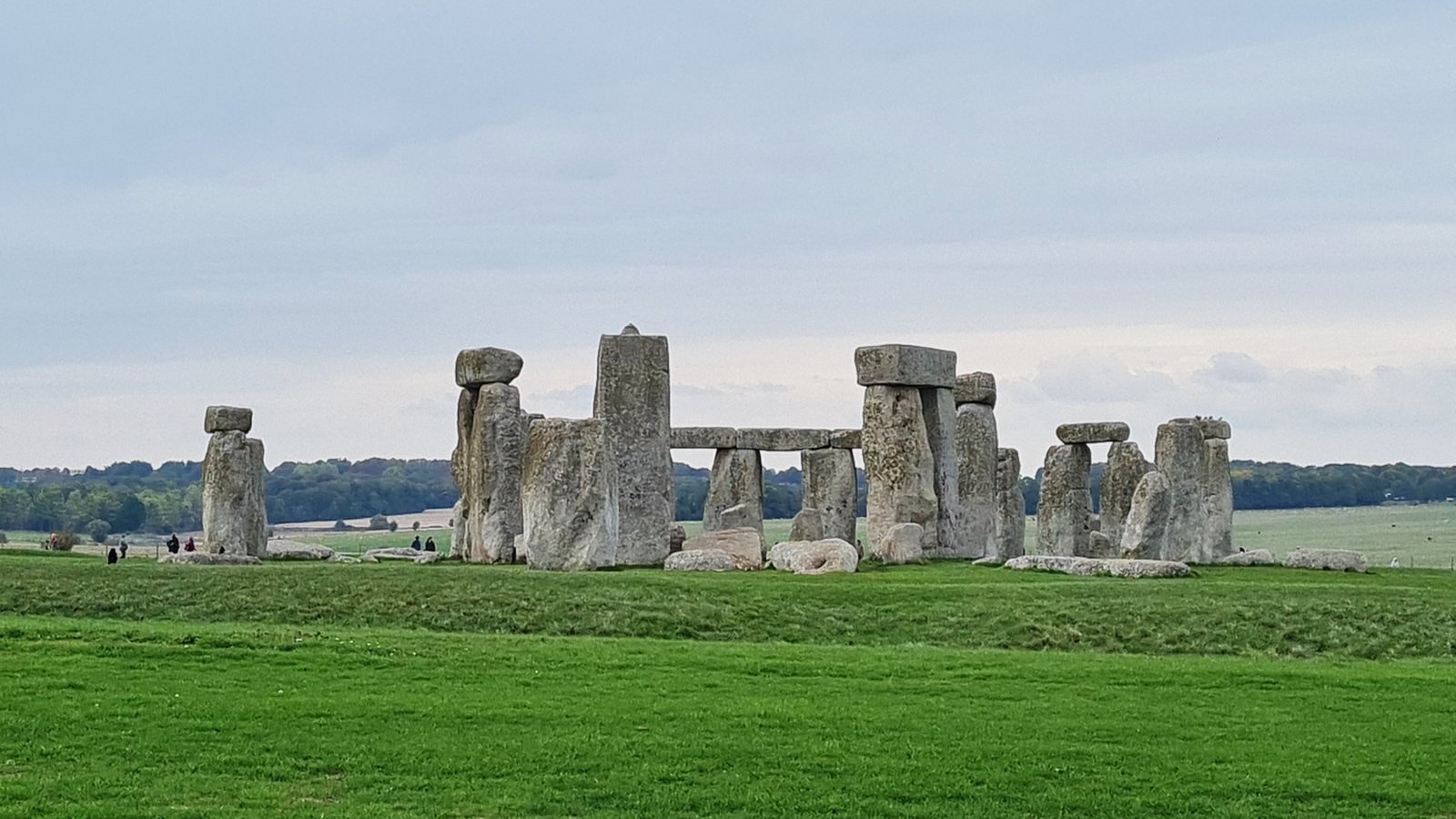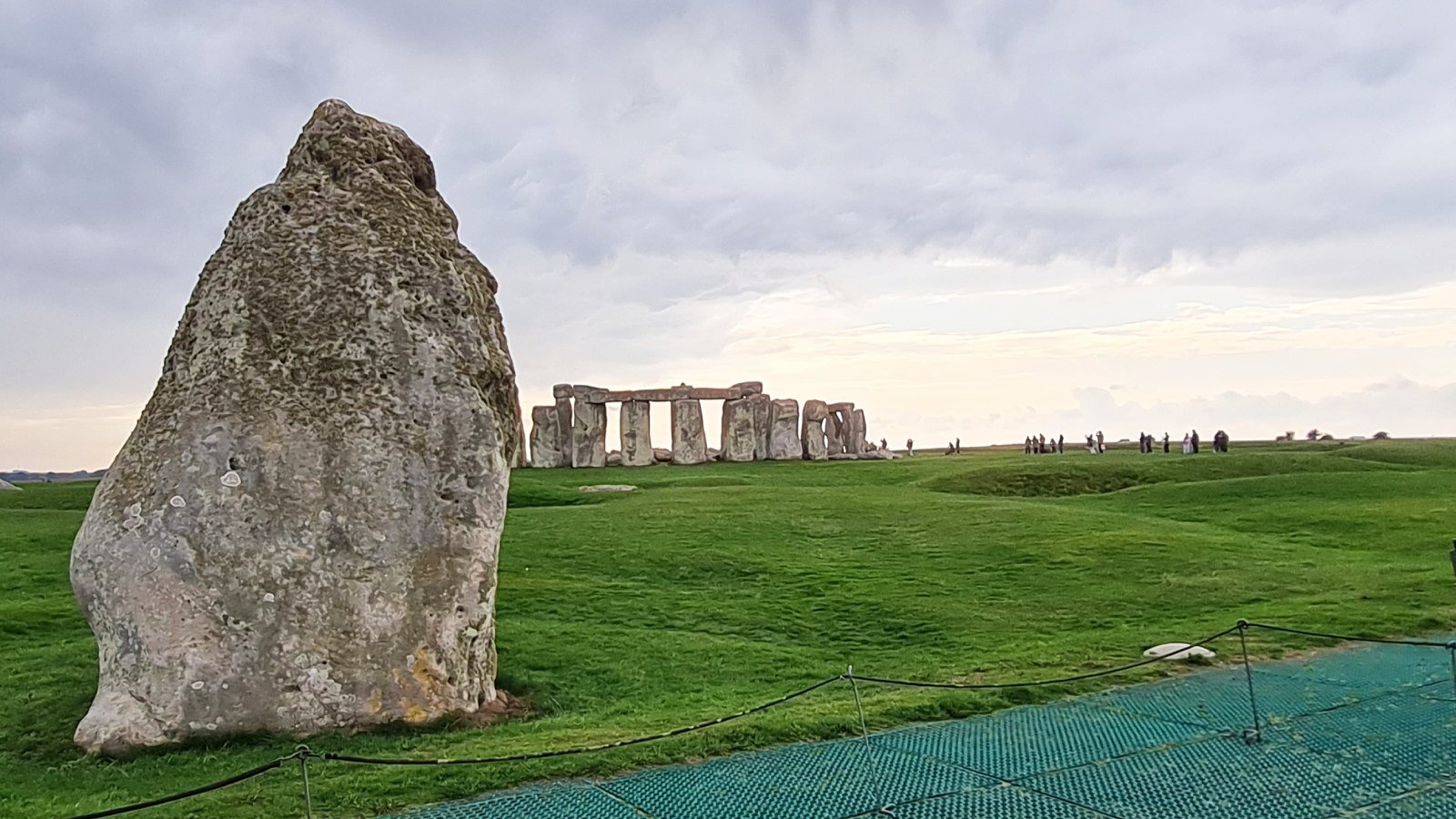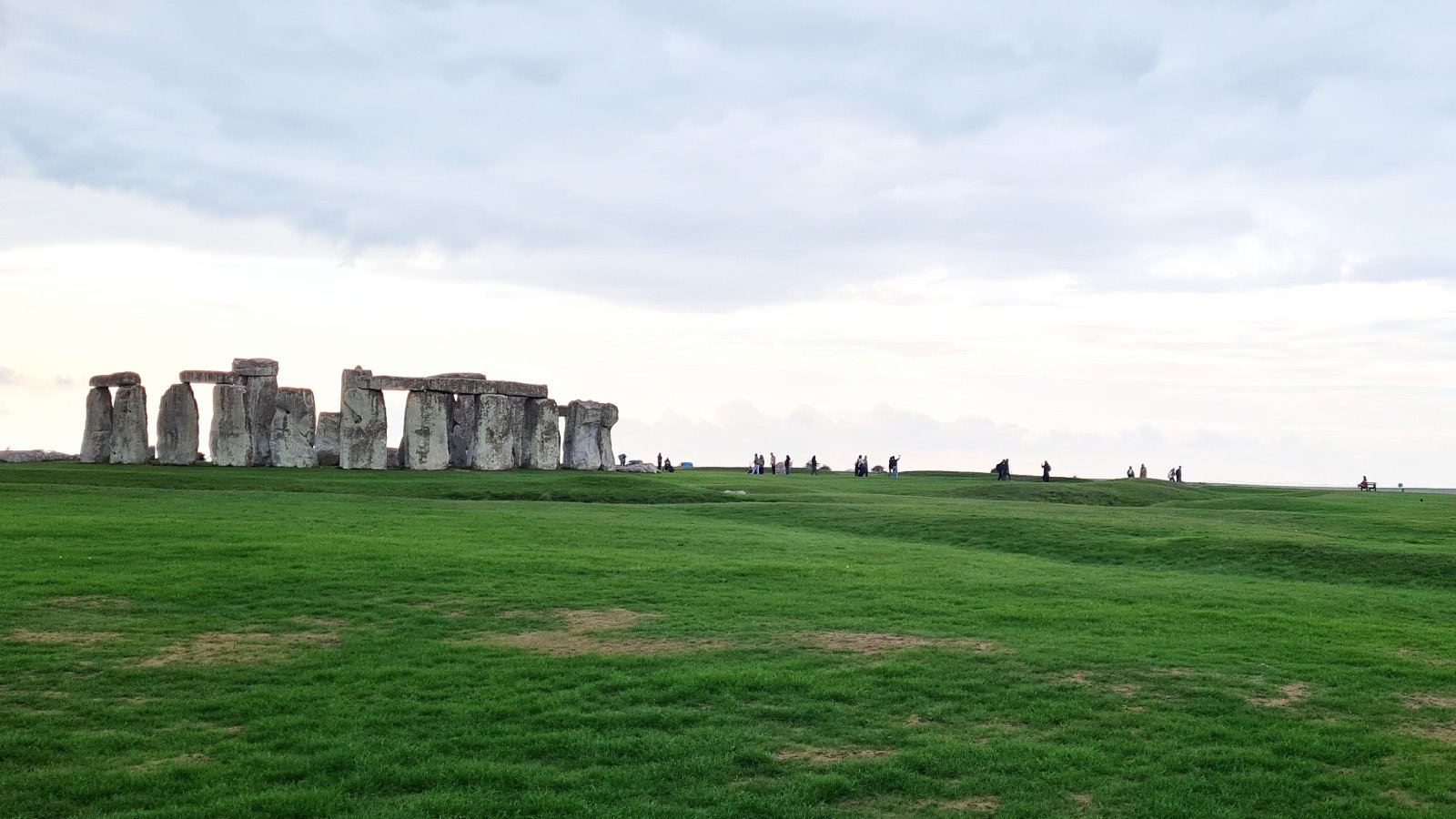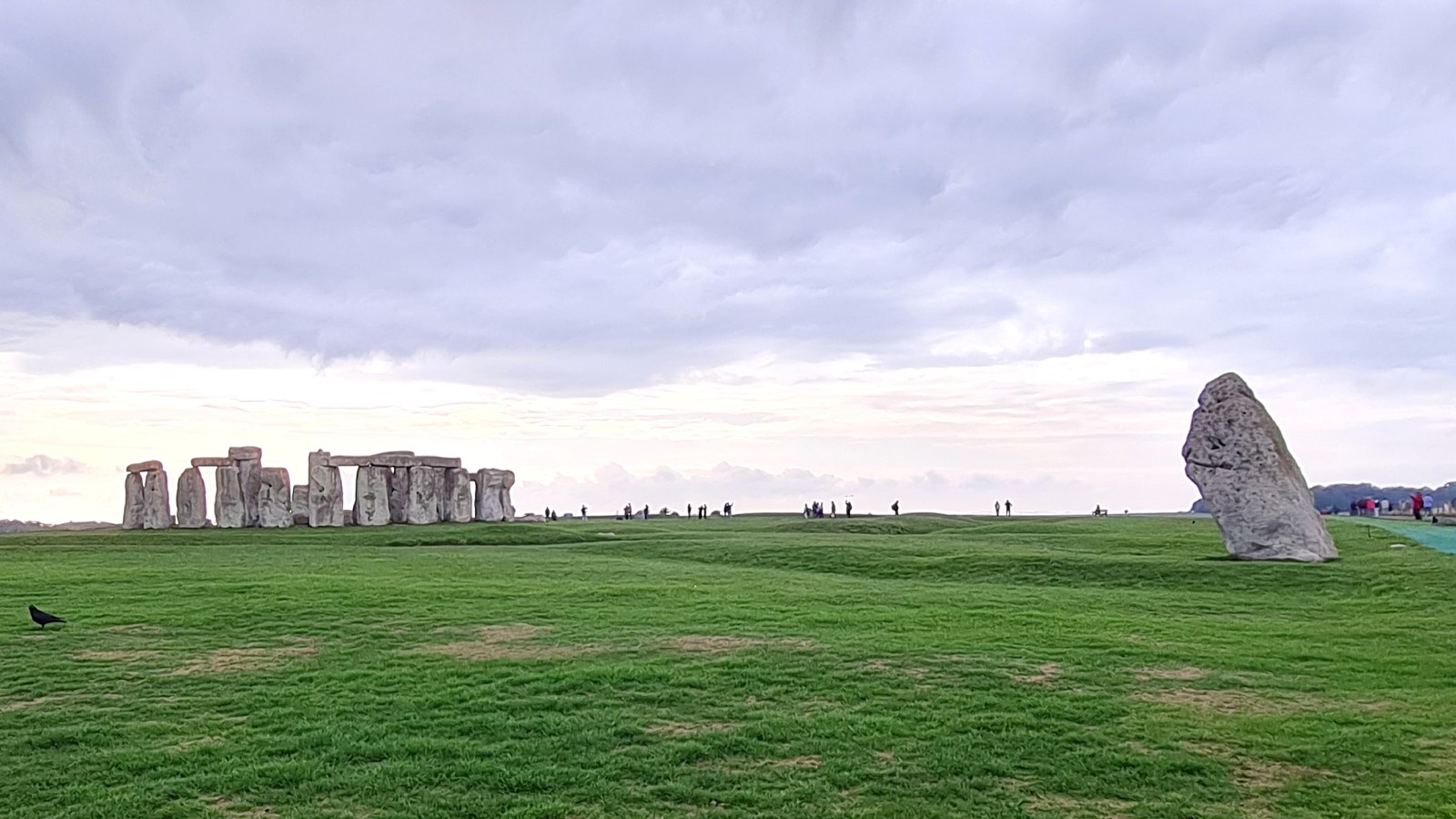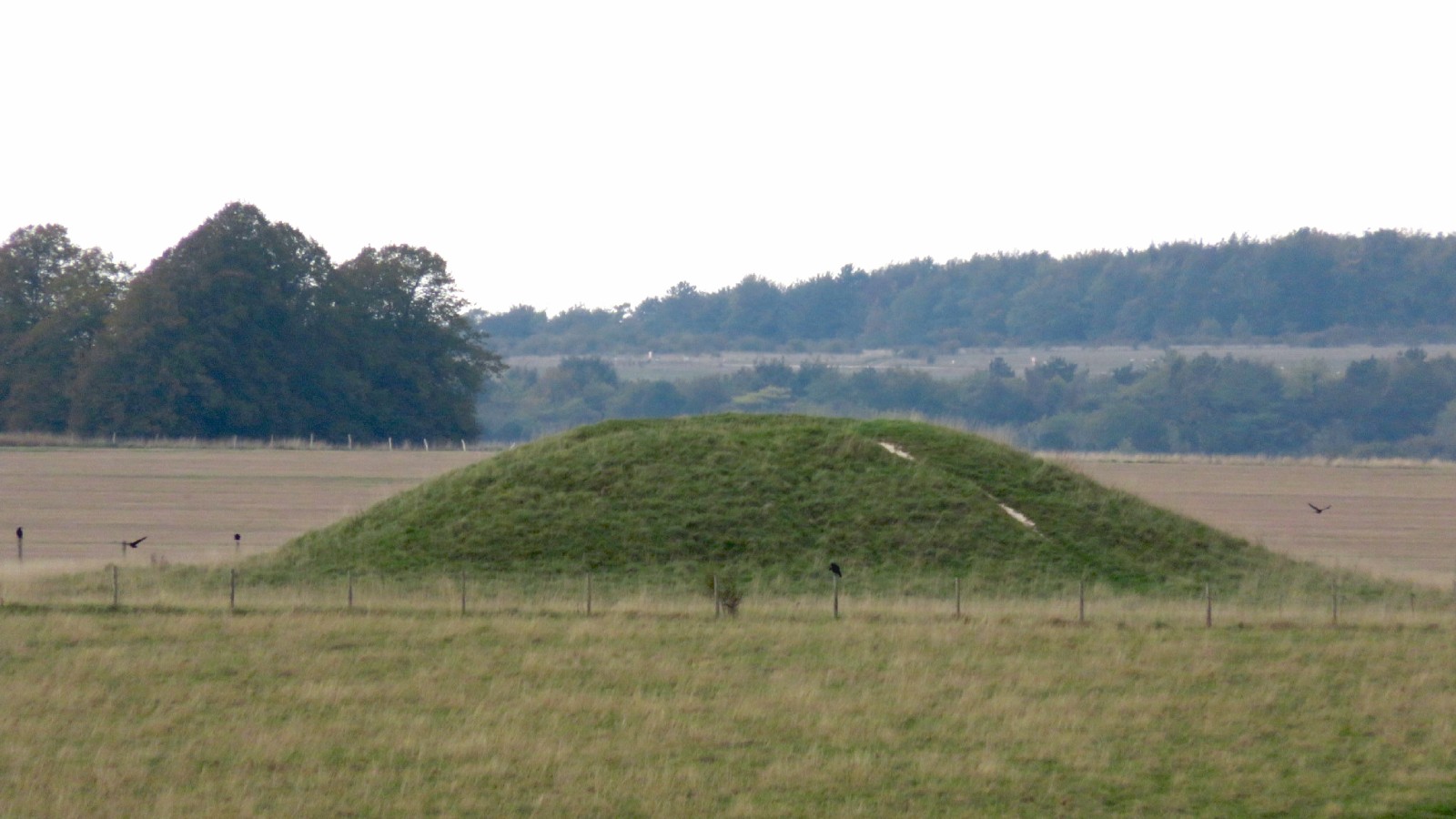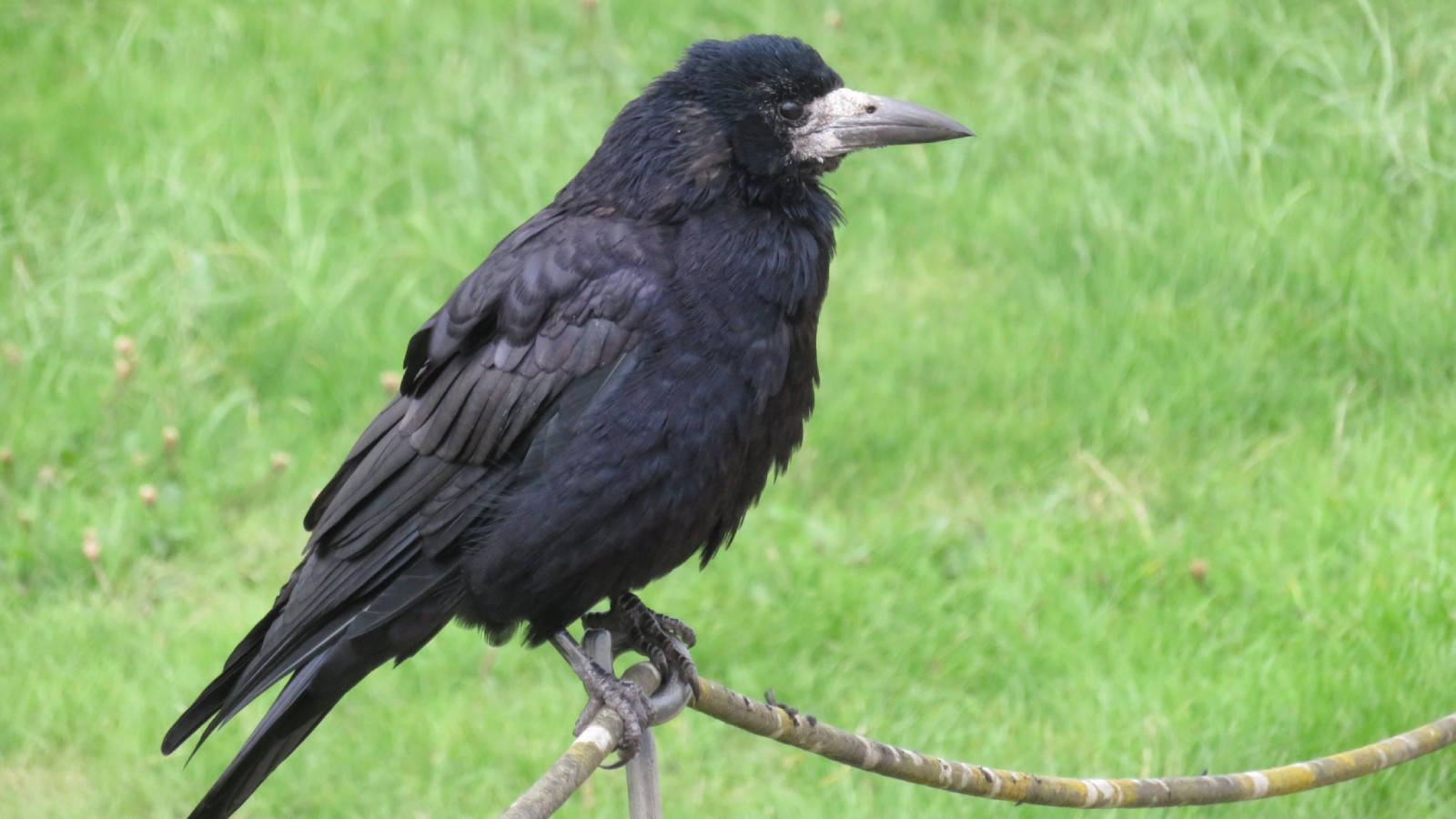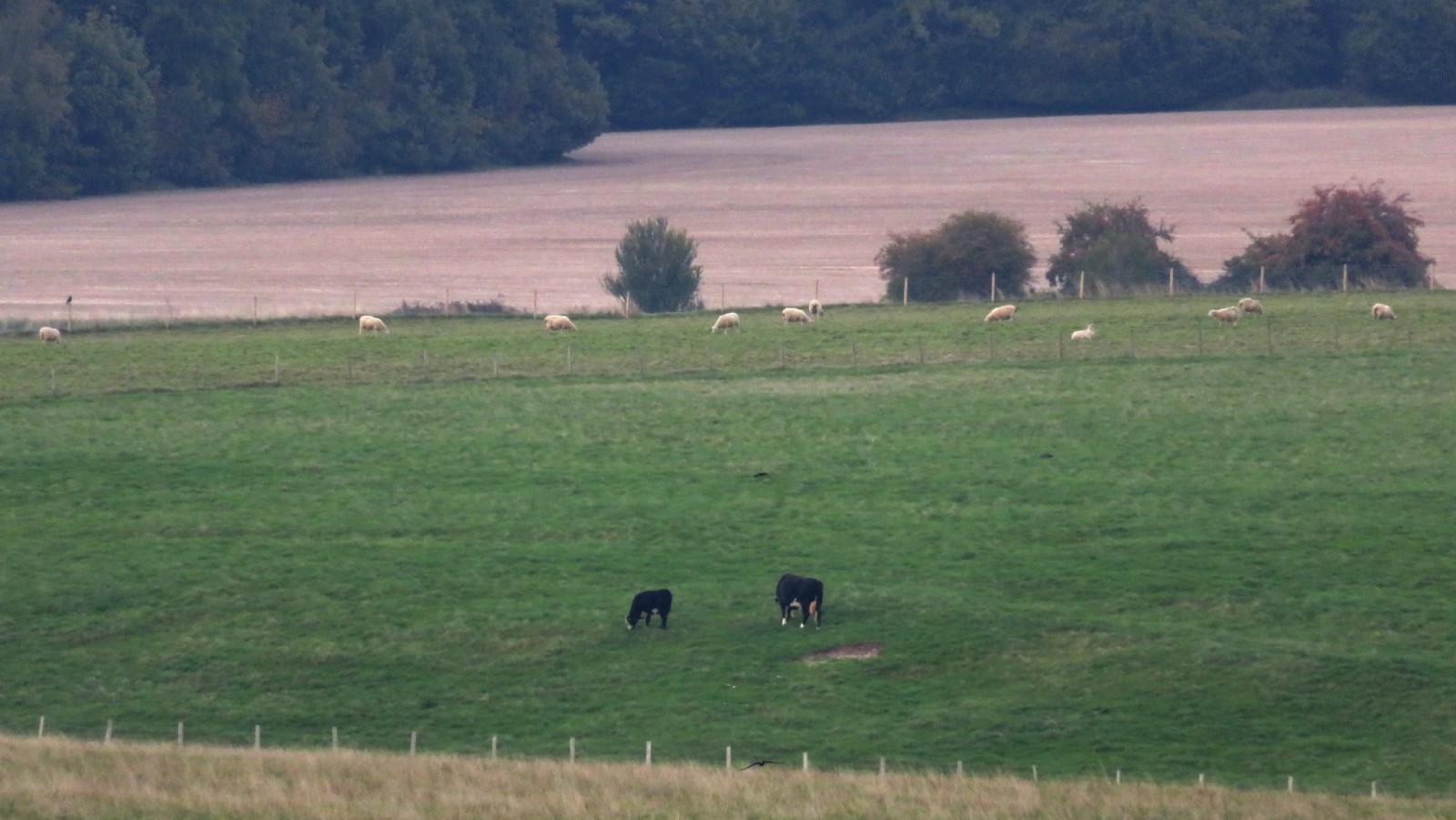We were excited to see Stonehenge emerge from the rolling hills after a long drive across from Dover. However we had to keep driving as the visitor centre is located 2.5km past the circle to help minimise the impact of visitors.
Our ticket included parking then a short shuttle bus ride up to the circle. Being a Saturday it was busy, however as the area is so large and open there was plenty of space to enjoy the experience. It was an overcast, almost hazy day, which added to the surreal atmosphere. The circle is perched on a rise amongst acres of undulating green fields which really enhances the sense of mystique.
We took our time to walk around the entire circle, photographing different angles and reading the various information signs. Stonehenge was built over a period of 1,500 years, beginning in 3000 BC. It is hard to comprehend how humans could have moved such enormous stones here, fashioned them and erected them, all without modern technology. The tallest stone is over seven metres high, and some sit on top of one another - how could they have lifted them with such precision? Even today it would require cranes, trucks, engineering equipment, and several different permits no doubt!
Within a two mild radius of the circle there are over 300 Bronze Age mounds, also called barrows. These were used for burials, rituals and ceremonies, and date back as far as 2500-2000 BC. Stonehenge was an important meeting place for centuries, and it is incredible to think of the different people who would have walked around this site throughout that time. I was surprised to learn that archeological evidence indicates that it wasn't only men that came here - around half of the burials were women, and some were children.
We noticed various birds in the area, some flying in formation, others perched on the stones, and couldn't help wondering how many thousands of years their species might have done this for, and how many other people might have observed them over time too.
It is believed that Stonehenge was built to mark celestial events, such as the summer and winter solstice. I'd love to come back one day for the Summer Solstice Festival, which is celebrated as the sun rises over the heel stone (fifth photo) and the first rays shine into the centre of the circle. It would be amazing to witness.
View Stonehenge on Google maps


